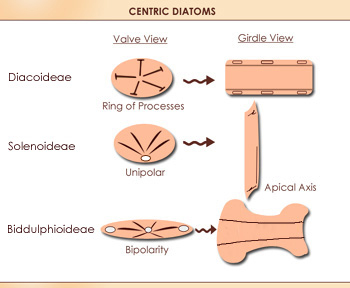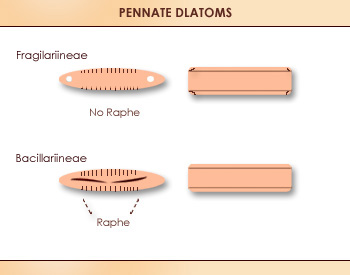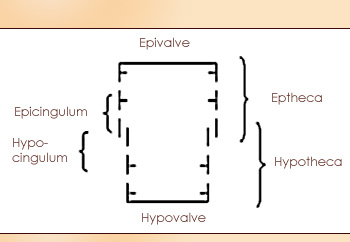Diatoms
|
31 species of diatoms were recorded to cause red tide in Hong Kong. Diatoms (Bacillariophyceae) are unicellular organisms with yellow-brown chloroplast(s) and siliceous cell walls. The construction of cell walls, called the frustule, consists of two valves fitted together by a cingulum. The taxonomy of diatoms is based on the shape and structure of the siliceous frustules. There are two groups of diatoms, (1) centric diatoms, the frustules are circular with essentially radial symmetry e.g. Coscinodiscus spp.; (2) pennate diatoms, the frustules are more elongate, with primarily bilateral symmetry e.g. Pseudo-nitzschia spp. Diatoms are commonly between 20 –200 microns in diameter or length. The cell may be solitary or colonial. They are found in fresh and marine waters habitats and even in soils. The following figures show the morphology of 2 groups of diatoms and diatom structure.
|
||
|
||


